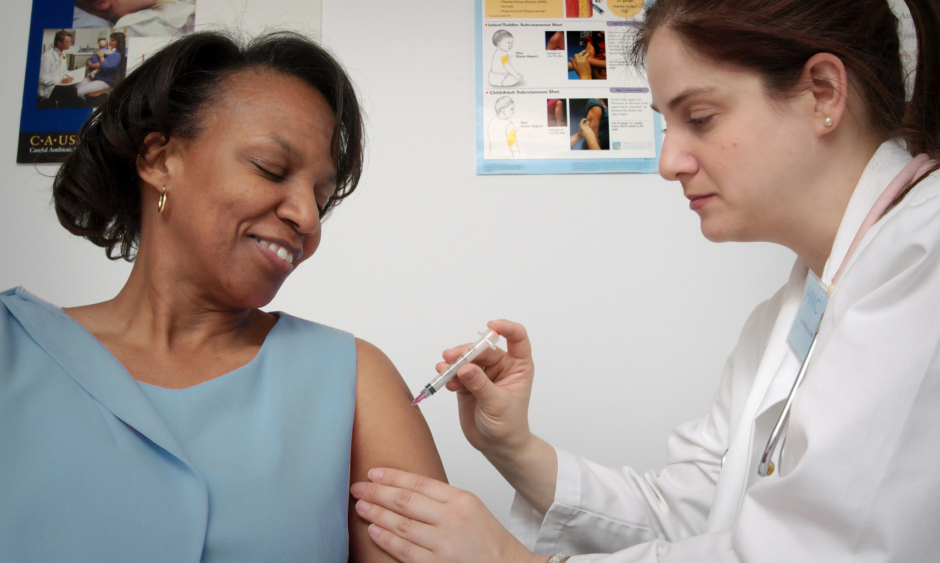Author: Rachel Donnison, Editorial Assistant
FREQUENTLY pitted as the only way of eradicating the coronavirus disease (COVID-19) that arises from severe acute respiratory syndrome coronavirus 2 (SARS-CoV-2), the world is holding its breath as the first vaccination programmes of 2021 are rolled out in the UK, Germany, Italy, Poland, Denmark, and many other countries in Europe and further afield.
2020: A YEAR OF ACCELERATED VACCINE DEVELOPMENT
Of the 320 COVID-19 vaccine candidates in development,1 the first to gain both U.S. Food and Drug Administration (FDA) and Medicines and Healthcare products Regulatory Agency (MHRA) approval was the BNT162b2 mRNA vaccine, produced jointly by the pharmaceutical giant Pfizer and biotechnology company BioNTech.2,3 This was the first time an mRNA vaccine has ever received approval by either regulatory board. In another example of a pharmaceutical and institutional partnership, the FDA-approved SARS-CoV-2 vaccine produced by Moderna and the National Institute of Allergy and Infectious Diseases (NIAID) also utilises mRNA to generate immunity.4 A more traditional form of a vaccine created against SARS-CoV-2 is the adenovirus vector-based ChAdOx1 nCoV-19 vaccine, developed by the joint efforts of the University of Oxford, Oxford, UK, and the multinational pharmaceutical company AstraZeneca.5 This has recently been approved for use in the UK by the MHRA and is presently being rolled out across the country with the hope of vaccinating 15 million of those at highest risk by mid-February.
Imperial College London, London, UK, have also entered the race to end the current pandemic, offering their self-amplifying RNA vaccine, which is currently in Phase I clinical trials.6
Breaking away from traditional methods, COVID-19 vaccines have revolutionised vaccine development, as the use of mRNA has seen unprecedented uptake by developers. But how much do we know about these vaccines, and what efficacy and safety benefits do they offer over traditional vector-based vaccines?
HISTORY OF mRNA VACCINES
mRNA molecules carry the genetic code of a specific encoded protein from the DNA in the nucleus to the cytoplasm, where the protein is then formed. Manufactured as a potential vaccine, mRNA offer many safety advantages over their double-stranded counterpart; namely that they do not interact with the host’s genetic material, excluding the potential negative effects of genomic integration. When used as a platform for vaccine development, their noninfectious, nonintegrating properties make the risks posed by infection or mutation low, and because it is degraded by natural cellular processes it can be easily regulated to lower immunogenicity.7
In 1989, the discovery of a successful method of mRNA in vitro transfection, whereby mRNA injected into mice resulted in the encoded protein’s production, led to the first suggestions of using mRNA as a therapeutic.8 Over the next 30 years, mRNA was largely side-lined because of technological issues with stability, induction of host immune response (immunogenicity), and inefficient in vivo delivery.7 Despite these barriers, mRNA offers high yields of in vitro transcription reactions, rendering them rapid, cost-effective, and scalable for mass production.9 For context, DNA vaccines require producing cell lines and subsequent clinical grade protein production, which typically takes over a year, whereas nucleic acid mRNA vaccine manufacture can occur in a few weeks.9
mRNA VACCINES ARE NOT NOVEL
Though only two mRNA vaccines have been approved by the FDA, there are several in clinical trials for protection against Chikungunya virus,10 HIV,11 and rabies,12 and there is much to be learnt from animal coronavirus vaccines.13 The results so far are promising, though the only results to be published in the peer-reviewed literature, as of yet, are for the first rabies mRNA vaccine; the vaccine induced functional antibodies in all 101 participants when injected intradermally or intramuscularly, though many (78%) experienced limited systemic adverse events.14
Fast forward to 2019, and the chaos induced by COVID-19 forced many immunologists to rethink the DNA-based vaccine status quo; in the case of an emerging novel virus, it is not simply a question of therapeutic effectiveness, but also of rapid development and large-scale deployment.
However, despite the many immunological advantages, the necessity of storage at -70 °C has already caused issues with the Pfizer/BioNTech vaccine, particularly in low- and middle-income countries where such freezing facilities are limited. This has led to the development of the COVID-19 Vaccine Global Access Facility (COVAX), which aims to ensure fair allocation of vaccine supply; to end this pandemic, it is not enough to eradicate the virus locally, there must be a global approach.15
Clinical data have also been released on the Pfizer/BioNTech and Moderna/NIAID mRNA vaccines, as summarised below.
REGULATOR-APPROVED mRNA VACCINES AGAINST COVID-19
Pfizer/BioNTech BNT162b2
In response to the rising COVID-19 cases worldwide in early 2020, Pfizer and BioNTech initiated a joint co-ordinated programme of four potential RNA-based COVID-19 vaccine candidates. Following clinical studies in both Germany and the USA, two of the four were taken forward on the strengths of their ability to elicit high SARS-CoV-2 neutralising antibody titres:16 the first was BNT162b1, which encoded the SARS-CoV-2 receptor–binding domain, and the second was BNT162b2, which encoded the SARS-CoV-2 full-length spike protein that is used by the virus to invade host cells.16 In the Phase I trials of both variants, the BNT162b2 vaccine was selected for continuation to Phase II/III based on its associated lower incidence and severity of systemic reactions, particularly in older participants.17 Phase III trials of the BNT162b2 vaccine, which enrolled 43,548 participants, showed a 95% effectiveness in preventing COVID-19 in a two-dose regimen, with similar efficacy across subgroups defined by age, sex, race, ethnicity, BMI, and comorbidities.18 In terms of safety, the most reported systemic events were headache and fatigue: 59% and 52%, respectively, in those aged 16–55 years, compared with 51% and 39% in those aged >55 years; however, headache and fatigue were also reported by placebo participants (23% and 24%, respectively).18
Moderna/NIAID mRNA-1273
Also utilising the SARS-CoV-2 spike glycoprotein is Moderna/NIAID’s mRNA vaccine contender. The lipid nanoparticle-encapsulated mRNA vaccine focusses on the SARS-CoV-2 pathway of viral entry: the spike protein is the major surface protein on the CoV virion, making it the logical primary target for neutralising antibodies.19 After successful antigenicity by mRNA-1273 in vivo, human Phase I clinical trials began in March 2020, just 66 days after the SARS-CoV-2 viral sequence was published.20 Tested in 45 volunteers, antibody responses were recorded in all participants and no trial-limiting safety concerns were identified; >50% of participants reported mild symptoms, such as fatigue, chills, headache, myalgia, and pain at the injection site.20 With the regulator’s permission, Phase II/III trials were approved and an interim analysis in November 2020 showed an effectiveness of 95% in the >30,000 USA participants enrolled.21 In contrast to the Pfizer/BioNTech vaccine that needs to be stored at -70 °C, the Moderna/NIAID vaccine will remain viable after freezing in a conventional freezer for up to 6 months, and once thawed can be placed into a standard refrigerator for 30 days.22
2021: ANOTHER UNPRECENDED YEAR?
Not only did both of the approved mRNA vaccines prevent symptomatic COVID-19 in their Phase III trials, but they also prevented severe cases of COVID-19; there were only 10 such cases with the Pfizer/BioNTech vaccine18 and 11 with the Moderna/NIAID candidate.21 Immunologically, both mRNA vaccines show similar efficacy (95%), though logistically the Moderna/NIAID vaccine is easier to store with current freezing systems. The results of the Imperial College London self-amplifying RNA vaccine trials will be much anticipated this year, and we can also expect to see results of DNA-based COVID-19 vaccine candidates, namely from Janssen/Johnson & Johnson, GlaxoSmithKline/Sanofi, and Altimmune. The challenge of emerging mutations in the genome of SARS-CoV-2 could potentially alter the efficacy of vaccines against COVID-19, although this is yet to be determined. “Unprecedented” has been a word used frequently since the onset of the pandemic, and the scientific innovation we have seen has been remarkable; we have seen the unprecedented speed of vaccine trials, unprecedented approval of an mRNA vaccine for human use, and unprecedented vaccine rollout. A process that can take more than 10 years reduced to just over 10 months will leave a legacy in vaccine development; the next time we are faced with an infectious disease of this scale, we will be thankful much of the leg work has already been done by those who came before us.








